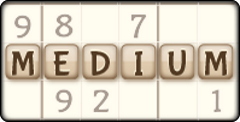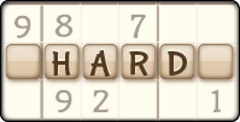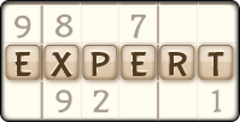Mistakes, Myths, and Misunderstandings New Players Have About Sudoku
The draw and appeal of Sudoku are almost immediately recognizable. As soon as you see those squares surrounded by numbers, the mind rushes to try and fill them in. As simple as the allure is, it can prove initially complex for newcomers. While, in time, it’s easy to get used to quickly solving grids and giving your brain it daily workout, its initially inscrutable nature can lead a lot of players to make mistakes and believe myths that simply aren’t true.
Here, we’re going to look at those mishaps, misconceptions, and other mysteries that are easily solved with a little experience. If you find Sudoku a hard game to understand and it seems intimidating, then reading the clarifications below can offer you some much-needed relief and help you get started with it.
“It’s a hard game to learn”
The sight of the empty grid with the numbers surrounding it, and those few numbers inside might look intimidating to begin with, but it’s not designed to be a super complex brain teaser. So long as you take the time to learn the rules, you should be able to get through it with the right strategies. Those rules are as follows:
- You have to arrange the numbers one through nine in each column, row, and grid.
- None of the numbers from one to nine can appear more than once in any column, row, or grid.
Once you have those rules down, you can start to work it out. You might make some missteps along the way, but once you start to put together strategies, you will find that you manage a much quicker start to each puzzle.
“You need to be super intelligent to play”
Sudoku doesn’t require you to have any level of IQ to play it. It’s designed to be relatively intuitive, but it does make use of the logic side of the brain. If you haven’t engaged in similar puzzles before, or recently, then it can take a little while for that side to kick in. You can always start with a smaller grid to get to grips with the nature of the game before making your way to higher-level puzzles, too.
“You don’t need to learn the rules”
While you may not have to be a genius to play Sudoku , trying to sit down and play without having a concrete grasp of the rules is likely to make it a lot easier to get confused and lost along the way. As mentioned, there are only two rules. It doesn’t take a lot of time to learn them, and once you do, you might make some mistakes, but it’s a lot easier to see how to correct them at the same time.
“It demands high-level math”
There are certainly ways to use math to come up with solutions in Sudoku but it is not, by nature, a math puzzle. It’s a numbers puzzle. At its most basic level, the only math you need is the ability to count to 9. If the game was played with different symbols or letters instead of numbers, it would play exactly the same. All you have to do it use some logic, and be ready to go back over your results to double-check them and pick out mistakes made along the way so that you can fix them.
“Guessing is the way to play”
As mentioned, playing Sudoku is going to require you to use the logical side of your brain. Logic is the exact opposite of guessing. You’re not going to get the correct answer by simply guessing which number goes well. You can start with some estimations of what number might be in what place, but those should be based on logical deduction using the surrounding numbers. If you’re guessing random numbers, then they are certainly going to be out of place and it’s very likely you will end up with impossible positions before too long. Think, deduct, and play logically if you want to succeed.
“It’s a luck-based game”
There’s nothing to do with luck or chance in gambling. The numbers are not randomly generated into place. The solution is very intentionally laid out, with the numbers 1 to 9 in every row, column, and grid. You have to work with a thought process that is based on that fundamental principle of the game. Just as you shouldn’t expect to guess your way to success, you should not expect luck to have any part in your success. You have to use your reasoning brain to work out the puzzle in its entirety.
“There’s more than one solution to each grid”
When done correctly, every Sudoku puzzle is designed to only have one solution. There should be one configuration of numbers, from 1 to 9, in every row, every column, and every grid. By necessity, it would be impossible to switch any of the rows, columns, or grids around and end up with a correct answer. That said, there are some puzzles that have not been correctly designed, and may allow you to come up with more than one solution with any mistakes. If that happens, however, it’s a mistake on the part of the puzzle designer, as it should not be possible.
“Sudoku is just the same game over and over again”
Just because there is only one solution per puzzle doesn’t mean that the same solution is going to apply to each puzzle. With different configurations for the numbers in every row, column, and grid, as well as the different clue number placements, there’s practically no limit to Sudoku puzzles and that’s not even counting the different types.
“You have to play on paper”
Sudoku might have been originally designed with pen and paper in mind, and most playing, even today, is done in newspapers, puzzle books, and otherwise with pen and paper. However, as soon as it started to get widespread popularity, online and digital Sudoku puzzles became widespread. There are plenty of websites that offer online Sudoku puzzles, as well as apps that allow you to play them directly on your smartphone, tablet, laptop, or PC. There’s nothing to stop you from playing on pen and paper or digitally, depending on what kind of mood you’re in/ Some prefer the old-school feel, and some prefer the convenience of digital versions.
“You should start with the partially filled groups”
In terms of strategies on how you can play, there are a few different approaches. One such approach is to start with the grids that already have some numbers filled in. Sometimes, you can quickly eliminate some options and fill those grids in part, but that doesn’t mean that it’s always the best opening move. In fact, if there’s an empty group that is surrounded by grids with clues filled in, the surrounding clues may make the empty group in the middle easier to solve. What the correct strategy is depends on your initial setup.
“You can’t fix your mistakes”
There is nothing to say that your first answer has to be your first. As time goes on, you’re going to have a much clearer idea of the configuration that you’re working with and it’s only natural that this means that you’re also going to have gotten some things wrong along the way. Writing with a pencil and using an eraser, or laying digital versions that allow you to quickly change your answer is a totally valid way of playing. In fact, a lot of people will write their first answers in tiny numbers in the corners or margins of squares. Taking these notes can help you formulate answers, but it doesn’t mean that you have to stick with them.
Taking too many notes
As mentioned, taking notes is a very common strategy, and can be super helpful for beginning to work out the configuration for the puzzle that you’re playing. However, if you start trying to guess multiple numbers in every single square to see what sticks, you’re very quickly going to have a super cluttered grid that is difficult to read. If you start taking down notes, but later find that they don’t work, erase them to make space for new notes, instead. Don’t confuse yourself.
Not using the counting strategy
Sometimes, getting the answer that you’re missing is as simple as counting. Count the numbers that are already in place, and you will work out which numbers are missing from that row, column, or grid. By narrowing down the list of candidates for each square, you have begun to unravel the solution. Following that logic might not always be the fastest strategy, but it will get you there.
Ignoring hidden pairs
You can find the hidden pairs in the squares. These are two squares which both have the same candidates, and the candidates for those squares can’t be used in any other place within the 3x3 grid. You can find your hidden pairs of narrow-down candidates in other grids. A good strategy is to use one configuration, try to work out the other candidates in your notes, reverse the two numbers in the hidden pair, and work it out again. One of those two solutions has to be correct.
“The faster you go, the better”
You might think to impose the challenge of solving the puzzle as quickly as you can, or you might start to work parts of the puzzle out, and, feeling like you’re on a roll, keep up the momentum by quickly filling in the blank spaces. However, there is no need to rush. Take your time, get comfortable, and if you’re playing with a site or app that has a timer, simply ignore it. Allow your brain to take the time to actually work out the various strategies and to fill in the gaps without making any mistakes. Better to walk your way to the right solution than to run and make mistakes that you have to go back and fix.
“You should focus on one part of the grid until you solve it”
The completionist side of your brain is going to want to get the satisfaction of completing one entire square or corner before moving on to the next bit. However, it’s not always that simple. You might not yet have gotten all of the information you need for the pieces to fall into place. Try to get a broader view of the puzzle if you find yourself stuck, seeing the overall grid might make it easier to work out the individual parts of it.
Not switching up your strategy
A common mistake for beginner players is to use the same strategies time and time again. There are many different strategies for working out a puzzle. Take your time to try them out, whether it’s the counting strategy, finding hidden pairs, or analysing rows, columns, and squares independently to start off. There’s no point beating your head on the same question over and over again if you’re not getting any helpful results.
“It’s not a game for younger players”
You might have some trouble initially adjusting to the logical side of Sudoku and, as a result, might make the assumption that it’s not a game that children can play. While it can take children a little longer to initially grasp the rules, they often play schoolyard games or video games with much more complex rulesets. There is nothing to stop kids from playing Sudoku, you might just want to start them off with a slightly easier puzzle, to begin with.
“There are no easier difficulties”
In keeping with the point above, there are varying difficulties with Sudoku. Difficulty can come in the form of different sizes of puzzles, with a 4x4 often being considered the beginner style. There are also puzzles that have more clues, aka numbers already in place, so that you don’t have to use as much deduction to work out the rest. If you’re not able to work out a puzzle, there’s nothing wrong with starting with an easier one and working your way up after beating it.
“If you don’t get a puzzle, give it up”
Even if you’re not able to immediately beat a puzzle, you shouldn’t simply toss it aside. You might want to take the time to learn some new strategies, or to try an easier puzzle so that you can get a better idea of the rules. However, after you’ve had the time to think, study, and practice, it can be hugely satisfying to come back to a puzzle that was giving you trouble and to ace it this time.
“There’s only one kind of Sudoku”
The traditional Sudoku puzzle is a grid with 9 rows, 9 columns, and 9 boxes. However, as already mentioned, there are different types of Sudoku puzzles. In fact, there’s a very wide variety, some of which add more rules.
First of all, you have the size variants such as Polyminos and grids of 4x4, 5x5, 6x6, 7x7, 8x8. 12x12, 16x16, 25x25 and even the huge “Sudoku-zilla” which is 100x100.
There are also types and classes like Sub Doku, Super Doku, Prime Doku, Maximum Su Doku, Minimum Su Doku, Jigsaw Sudoku, Hypersudoku, Killer Sudoku, Sandwich Sudoku, and more. If you ever feel like varying your Sudoku experience, simply search for any of the varieties above.
“There’s no benefit to playing Sudoku”
You may have heard, or thought, at some point, that there’s “no point” to playing Sudoku, and that it’s just a waste of time. First of all, it’s a puzzle done for fun, so as long as you’re having fun with it, whether or not that time is productive isn’t important. That said, it it anything but unproductive. Here are just some of the purported benefits of playing Sudoku:
- It boosts your concentration
- It helps improve your patience
- It has a meditative nature that can improve your mindset
- It works out your memory and recall
- It can improve your spatial reasoning abilities
- It can improve your thinking and response time
- It works out the logical side of your brain
- It’s highly relaxing
- It can be a good distraction from overthinking
“Sudoku is a Japanese game”
While the name is, indeed, Japanese, and a shortened version of a phrase that roughly means “the numbers/digits must remain single,” Sudoku was actually invented by Howard Garns, a retired architect from Indiana. The Japanese name was popularized when the puzzle was first widely adopted in Japan.
Don’t let the mistakes, myths, and misunderstandings stop you from playing Sudoku
Sudoku can be the perfect daily training that your brain needs, and can offer just the distraction that can help you get through 30 minutes in the waiting room or a ride on a plane. There are a lot of different Sudoku puzzles and subtypes to explore, and hopefully, the information above will have cleared away a lot of the misunderstandings about the number puzzles game so that you can better dive into it.
Sudoku Levels
Seasonal Sudoku Games
More Games
Sudoku News
Disclaimer
DISCLAIMER: The games on this website are using PLAY (fake) money. No payouts will be awarded, there are no "winnings", as all games represented by 247 Games LLC are free to play. Play strictly for fun.





































